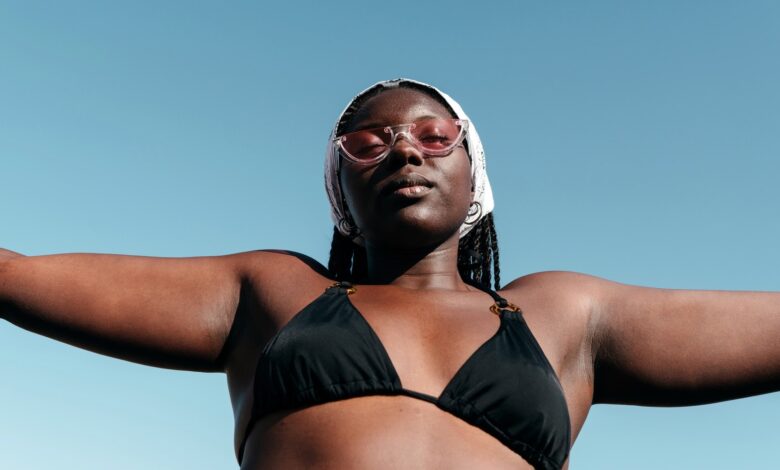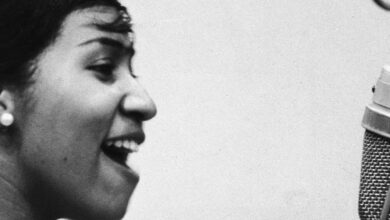Learning to Swim at Age 37


I’m learning to swim for the first time at 37.
I never learned when I was little. Swimming was mandatory in my high school gym class. Because my public high school was well known, many freshmen came to the area to attend it, even if they hadn’t grown up in that upper-middle-class Chicago suburb. Cut to a group of us Black kids shivering in the shallow end as a 16-year-old lifeguard tried to explain how to tread water, while the gym teacher worked with the more experienced swimmers. Needless to say, treading water did not stick.
Despite this, I have always loved bodies of water. They carve out ravines, make jagged things smooth, and flow, push, and pull. When anxiety gets the best of me, I sit by Lake Michigan and watch the water lap against the shoreline, noticing that it’s content to do one thing. It settles me back into my body.
Now, in my late thirties, I want to learn to swim because alongside my love of water resides a deep fear of drowning. I want to do more than splash in the shallow end of the pool – I want to enjoy myself but be safe while doing it. So, here I am, halfway into a seven-week swim course at my local gym. I love it. I’ve learned to blow bubbles out of my nose. My classmates are two older adults, Mike and Shirley (who look exactly how one would imagine a Mike and Shirley would look), who are also learning to overcome fears at an advanced age.
We begin every class by breathing and calming our minds in the water, because swimming, like most things, is also a mental feat. After taking deep breaths, we “bob,” exhaling under the water, pushing air out of our noses, and humming. Three times, we inhale deeply, exhale underwater, rise up, open our mouths, and dispel any excess water. I feel my mind become meditative and try to keep that calm with me. There’s progress to be made, and breathing is the beginning, the middle, and the end.
We first learn to float. The water, by nature, will carry you, if you relax, the instructor said. If you relax, being the emphasis. Relaxing in the water goes against natural instincts; I want to fight to survive. There have been studies that show how trauma can be passed down genetically through generations. How can I trust this thing that my very DNA is designed to understand “this will kill you”? Instead, I rely on knowing the specific mechanics. Floating requires holding air in your lungs to buoy you to the surface, leveling your hips with the water, and letting your mind go. Standing up requires sweeping your arms downward and tucking your knees to propel you up. That knowledge feels soothing, knowing it won’t – can’t – change. Easy enough. Floating on my back feels like a breeze.
“Great!” The instructor says. “Let’s switch to a front float. The dead man’s float.”
The buzzing in my head overrides all thoughts, replacing them with the echoing chant: dead man’s float, dead man’s float. While holding a foam dumbbell, I know I won’t casually free float to my death — but letting go of my dumbbell face down in the water is not on my bingo card. In a panic, I swallow a ton of pool water and flail embarrassingly in three feet six inches of water. The urge to run hits me, but I tell myself: “Abigail Mallett, you will not die. Just stand up.” Taking it slowly, I attempt again to let go of my dumbbell near the side of the pool, but my heart tailspins each time. Finally, I dare myself to let go for a full second. Panic grips me but I float a beat longer, letting myself see that floating is just that – floating, nothing more. I sweep my arms downward, tuck in my knees and stand up.
I feel accomplished, powerful even, but by the next week all anxiety had returned. I’d conquered my fears last time; did I have to conquer them every class? I am still deep in survival mode, each and every week. But I shouldn’t have to convince myself I won’t die – I need only to exist, just as the water exists. Let it envelop me and do what it knows to do, help me float to the surface. I am not only learning to trust the water, I am fortifying trust in myself, simultaneously untangling grief, pain, and trauma woven into my genetics.
I am not the only one who feels this, right? Craving solidarity, I sought out other Black women who learned to swim as adults. Yaminah Mayo, an incredible writer, mirrored my own thoughts when I asked why she wanted to learn to swim:
The impetus came in Jamaica. There was all this beautiful open water that I sadly couldn’t access in the way I wanted. Water is scary. Enter swimming classes. The two days a week I’m in the pool are gratifying and healing. I’m even happy to take in the chlorine, and once I get moving I forget all the stress of the outside world. Swimming forces me to focus on every inch of my body so I have proper form. I’m extremely proud of myself for taking on this life skill. It’s amazing how naturally our bodies move in and through water. I can’t express enough how much I love to see us in the water. Swimming and water competency is such a revolutionary thing for Black people in particular to reclaim.
If I can be honest, sometimes it feels tiring to have most of my experiences linked to being Black. Not because “everything has to be about race,” but because existing while Black IS tiring, full stop. I simply want to learn to swim, not carry the torch of my ancestors, but that is not possible. I cannot unlink my Blackness from any experience. Saying our history with water is horrific is a vast understatement — from how Black people came eastward over the Atlantic to how towns immediately drained pools when a Black body dared to get in – so I cannot pretend that learning to swim isn’t shifting my very foundation. Choosing to learn, to conquer this particular fear, is revolutionary every which way you turn it.
Survival is part of my tapestry, but through this I get to choose what survival looks like. It feels spiritual. This seemingly small thing is now reshaping how I move through the world.
And it turns out I get to float.
Abby Mallett is a freelance writer and editor at Joy The Baker. She lives in Chicago with her girlfriend and three cats. She’s currently reading all the fantasy romances she can get her hands on. She has also written for Cup of Jo about traveling and falling in love. Follow Abby on Instagram, if you’d like.
P.S. Five things I want to tell my white friends, and how I travel as a fat queer Black woman.
(Illustration by Abbey Lossing for Cup of Jo.)






